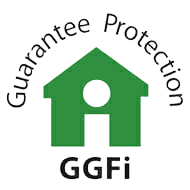Despite its immense importance, a fire door is often overlooked in factories, offices, commercial buildings, and homes. Exterior fire doors are an essential piece of any fire safety plan because they help in safeguarding the inhabitants of a building from a fire. External fire doors might seem to be insignificant and an unnecessary expense, but in reality, this is something that offers complete peace of mind, and with that, quality doors become a necessity.
What are composite fire doors?
A fire door is a door which has been tested against fire for a certain period of time; one example is the FD30 door which can withstand fire for 30 minutes. This door’s main purpose is to contain a fire and its smoke and give a building’s occupants more time to evacuate safely.
It is a legal requirement for residential blocks to have an FD30 door fitted. It is also an essential consideration for garages and homes due to the added protection and peace of mind it provides in the event of a fire.
A composite fire door is the same as a standard composite door, with the exception of the fireproof materials it contains so that it complies with all the necessary requirements.
Types of fire doors
There are three popular types of fire door which are available in the UK:
- Wooden doors, which come in a wide variety of types and if treated correctly can last for up to a hundred years.
- uPVC doors, which are cheaper and ideal for those on a more limited budget.
- A composite door, which comes close to the high-quality appearance of a wooden door, and is usually slightly cheaper. Composite doors also come in a range of styles and designs to suit your taste and any particular design features of your home.
Benefits of composite fire doors
There are a number of advantages to composite fire doors, beyond the immediate safety aspects:
- The fire-retardant materials are essential in controlling the spread of fire and smoke. An ordinary door will allow a fire to move through a building quickly while a composite fire door will slow down a fire’s progress. Fire-retardant materials include steel, glass, aluminium, and timber, making it aesthetically pleasing as well as safe.
- Composite fire doors are composed of 100 percent non-toxic materials so that even if they do burn, they will not release toxic gases.
- Installing a fire door does not mean that you have to compromise on the aesthetics and overall appearance of your house or office. There are a wide variety of styles and colours available on the market, allowing you to consider style as well as safety.
Given these benefits, a composite fire door is worth considering for your home, and it is important to keep in mind that it is a legal requirement for residential blocks and offices.
Talk to the experts
If you need help finding the right door for your home or commercial property, then get in touch with the team at 1st Scenic. You can book a free consultation with them to discuss your requirements and they will help you find the door that is best suited to your needs and design style. Most importantly, it will give you essential protection should a fire break out. Find out more by emailing info@1stscenic.co.uk.











